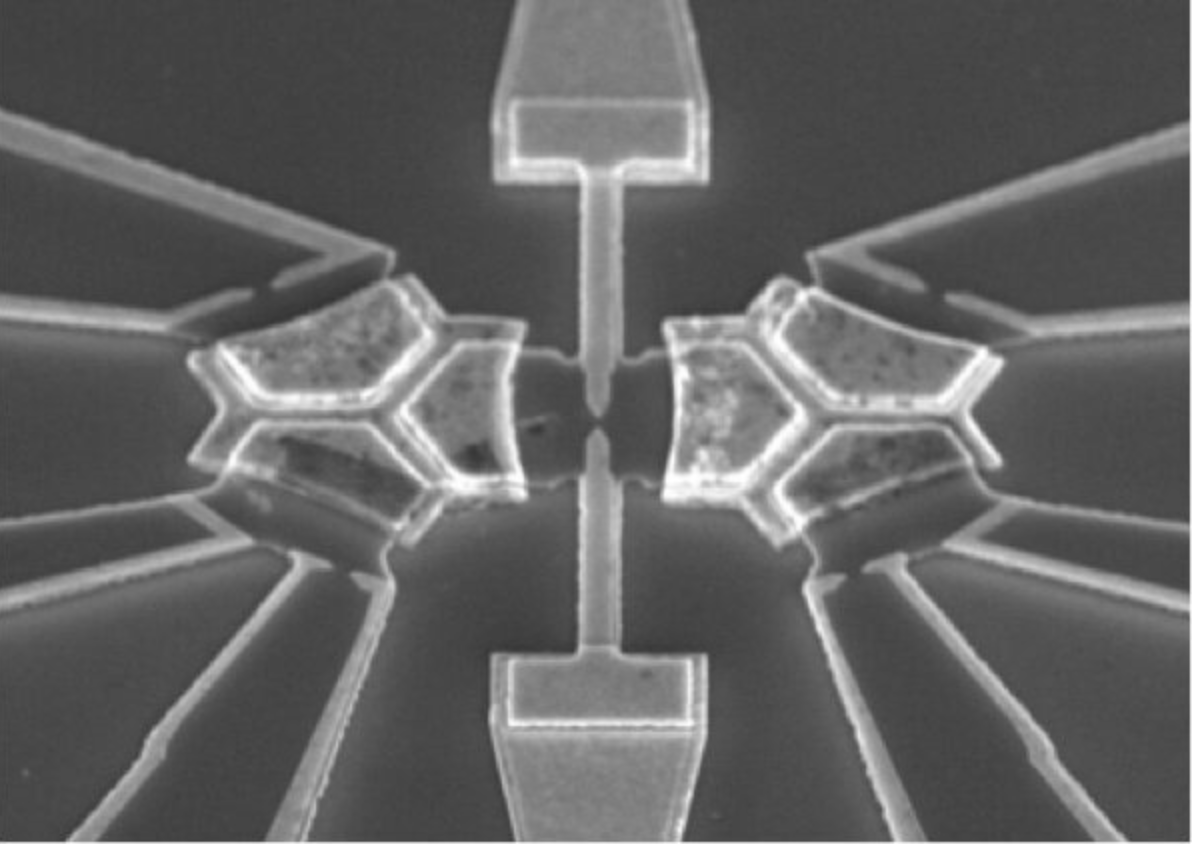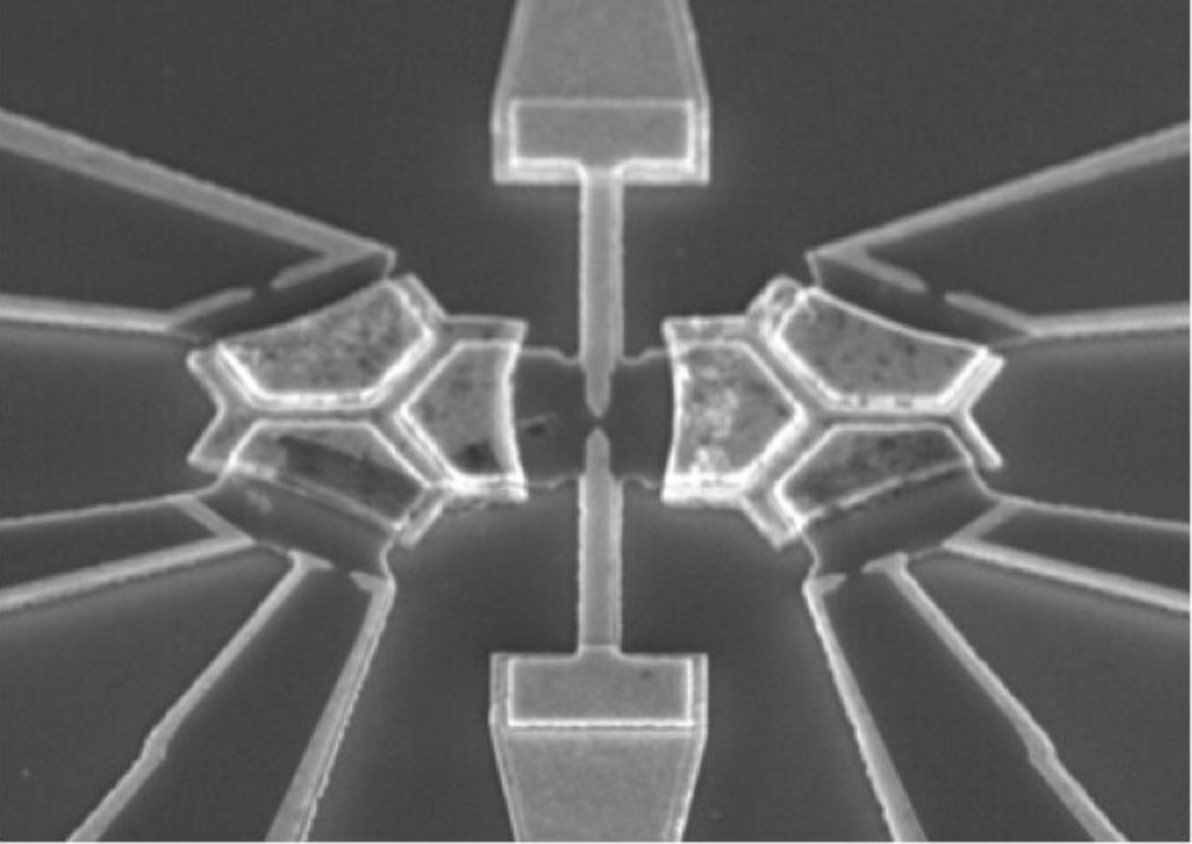Bridging WSe2/WS2 gaps in 2D; spleen on a chip; why lithium metal fails; analog quantum computer.

The power of proximity
Researchers from Department of Energy’s Lawrence Berkeley National Laboratory (Berkeley Lab), Stanford, and University of California Berkeley have observed that electrons transfer heat rapidly between layers of the 2D semiconductor materials tungsten diselenide (WSe2) and tungsten disulfide (WS2). The electrons acted as a bridge between the two materials, the layers of the two materials which were not bonded tightly together. The bridge facilitated rapid heat transfer, the researchers found.
“Our work shows that we need to go beyond the analogy of Lego blocks to understand stacks of disparate 2D materials, even though the layers aren’t strongly bonded to one another,” said the study’s leader, Archana Raja, a Berkeley Lab scientist, in a story on Berkeley Lab’s website. “The seemingly distinct layers, in fact, communicate through shared electronic pathways, allowing us to access and eventually design properties that are greater than the sum of the parts.”
The team published their research findings in Nature Nanotechnology, in late December 2022. See “Bidirectional phonon emission in two-dimensional heterostructures triggered by ultrafast charge transfer.” In which they concluded, “Our work indicates strong electron–phonon coupling via layer-hybridized electronic states — a novel route to control energy transport across atomic junctions.”
Microfluidics could speed sickle-cell disease research
A microfluidic device has been designed and used by researchers at MIT, Nanyang Technological University in Singapore, the Pasteur Institute in Paris, and other institutions, to study the behavior of red blood cells and misshapen sickle cells as they are filtered by the spleen. Called a “spleen-on-a-chip,” the microfluidic device mimics the filtering action of a spleen, which filters the old and damaged blood cells. The spleen has a hard time filtering sickle-shaped cells, which are also harder than healthy blood cells. Researchers are using the chip to model when spleen clogs and how fast it unclogs or recovers when oxygen is added to the blood and blood oxygen levels go up. The device will be useful in testing the effectiveness of drugs to treat acute splenic sequestration, a low-oxygen crisis for individuals with sickle-cell disease, usually treated with blood infusions to bring oxygen levels back up.
Analog quantum computer for physics problems
Researchers from Stanford University in the U.S. and University College Dublin (UCD) in Ireland have designed an analog quantum computer to solve complex physics problems. The team built specially designed analog computers called Quantum Simulators that are analogous to the problem being solved and are made of quantum components. The team used hybrid metal-semiconductor components incorporated into a nanoelectronic circuit, which the researchers at Stanford, UCD, and the Department of Energy’s SLAC National Accelerator Laboratory devised.
“Certain problems are simply too complex for even the fastest digital classical computers to solve. The accurate simulation of complex quantum materials such as the high-temperature superconductors is a really important example,” said Dr Andrew Mitchell, director of the UCD Centre for Quantum Engineering, Science, and Technology (C-QuEST), a theoretical physicist at UCD School of Physics, and a co-author of the paper. “‘Quantum Simulators’ solve specific models in quantum physics by leveraging the inherent quantum mechanical properties of its nanoscale components. While we have not yet been able to build an all-purpose programmable quantum computer with sufficient power to solve all of the open problems in physics, what we can now do is build bespoke analogue devices with quantum components that can solve specific quantum physics problems.”
UCD’s Dr Mitchell devise the theory and modelling and Stanford’s Experimental Nanoscience Group built and operated the device.


Fig. 1. Micrograph image of the new Quantum Simulator, which features two coupled nano-sized metal-semiconductor components embedded in an electronic circuit. Source: University College of Dublin
The team’s research has been published their findings in Nature Physics, under the title “Quantum simulation of an exotic quantum critical point in a two-site charge Kondo circuit.” https://www.nature.com/articles/s41567-022-01905-4
Why lithium metal batteries fail
Researchers at Stanford University and SLAC National Accelerator Laboratory say they know why the promising lithium metal batteries are prone to fail. Any mechanical stress, including potent recharging and even dust, puts little fissures in the battery. “Just modest indentation, bending or twisting of the batteries can cause nanoscopic fissures in the materials to open and lithium to intrude into the solid electrolyte causing it to short circuit,” said William Chueh, a associate professor at Stanford and senior author in an article on Stanford’s website.
Susan Rambo
(all posts)
Susan Rambo is the managing editor of Semiconductor Engineering.
- SEO Powered Content & PR Distribution. Get Amplified Today.
- Platoblockchain. Web3 Metaverse Intelligence. Knowledge Amplified. Access Here.
- Source: https://semiengineering.com/research-bits-jan-31/



